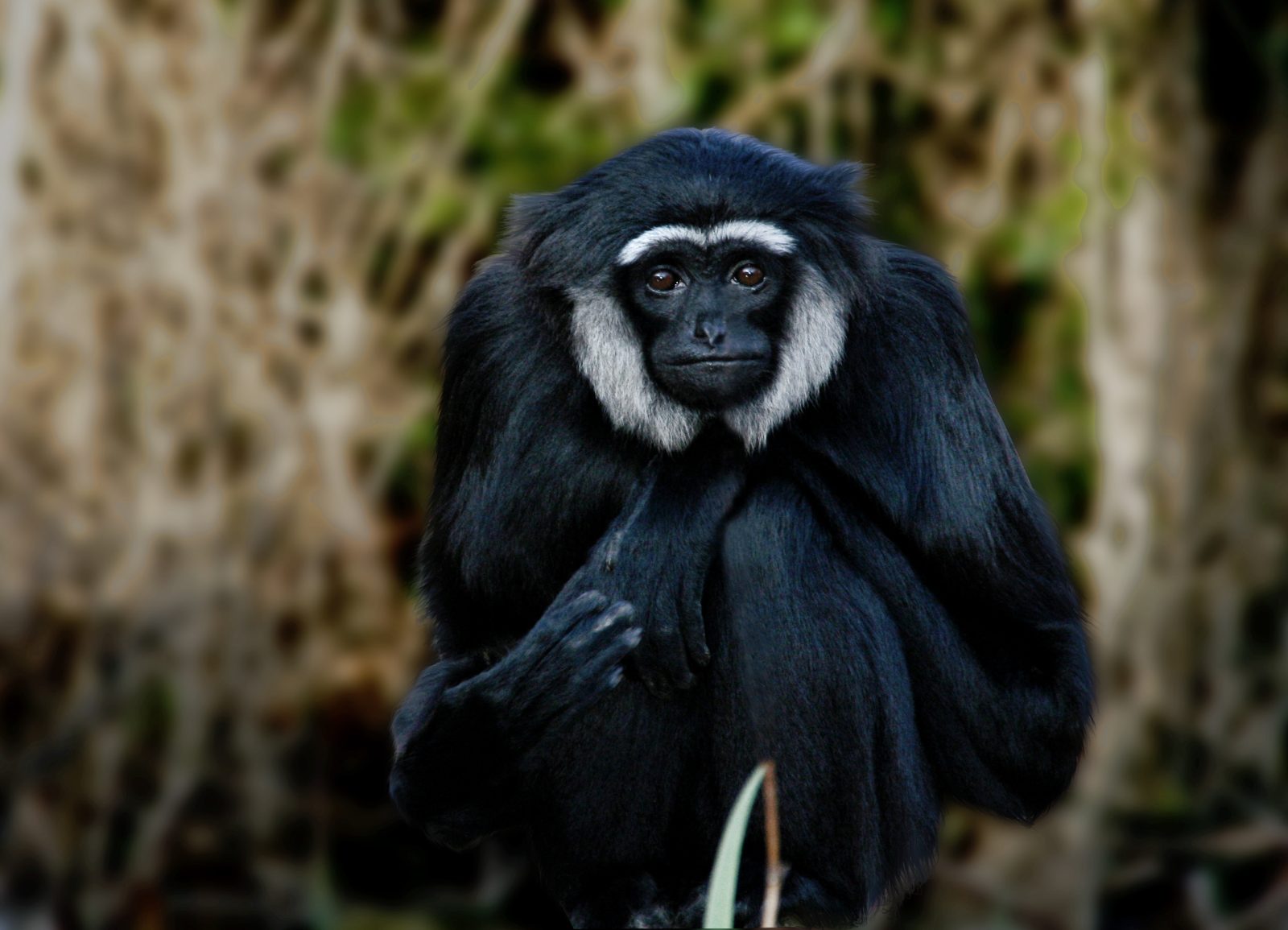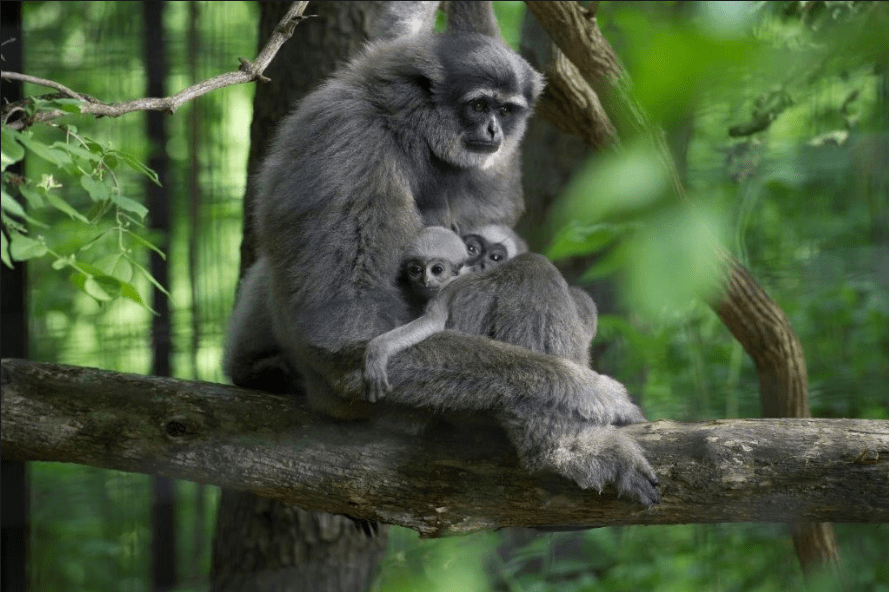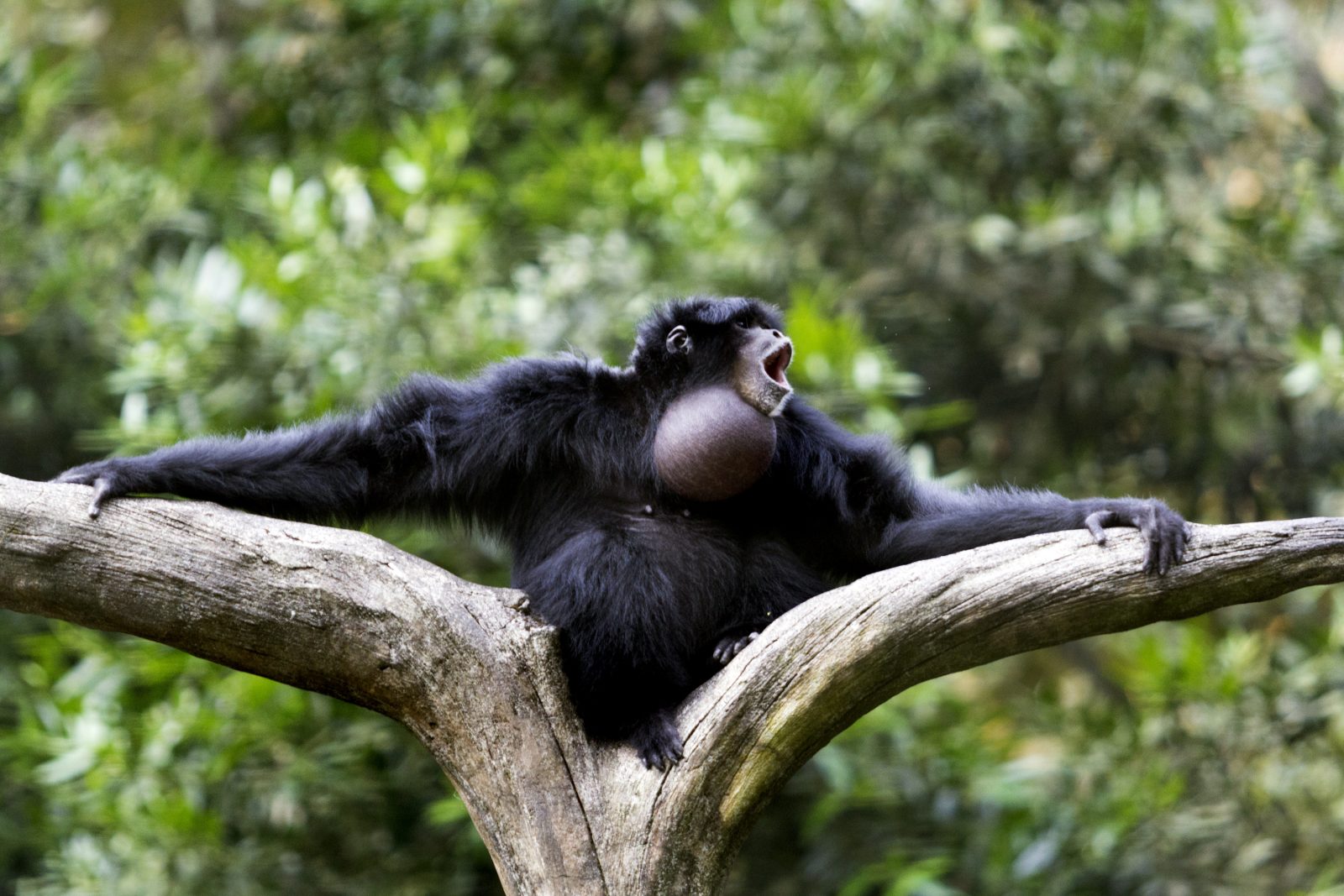Agile gibbon & the Borneon white cheeked gibbon

Agile gibbons are found in Indonesia on the island of Sumatra, Malaysia, and southern Thailand.
While not commonly recognized as having subspecies, some recognize a mountain and lowland version.
Accurate numbers of these gibbons in the wild are hard to find, but declines of 50% are thought to have occurred in the last 45 years, so this species is also classed as endangered.
While the Bornean white bearded gibbon is now considered a separate species, I will deal with it on the same page as they are similar. This species is considered endangered. Should news on this species grow, we will separate it out from other species.
While these animals are not great apes, they are lesser apes, and are very interesting to watch. There are likely to be a great draw in places where Orangutans do not exist, such as on mainland Asia, as well as in smaller reserves that cannot support Orangutans.
This is not a species that I have written about, but if I do in the future, it will appear below. Furthermore, as we add destinations that are good for this species they will appear below the new













